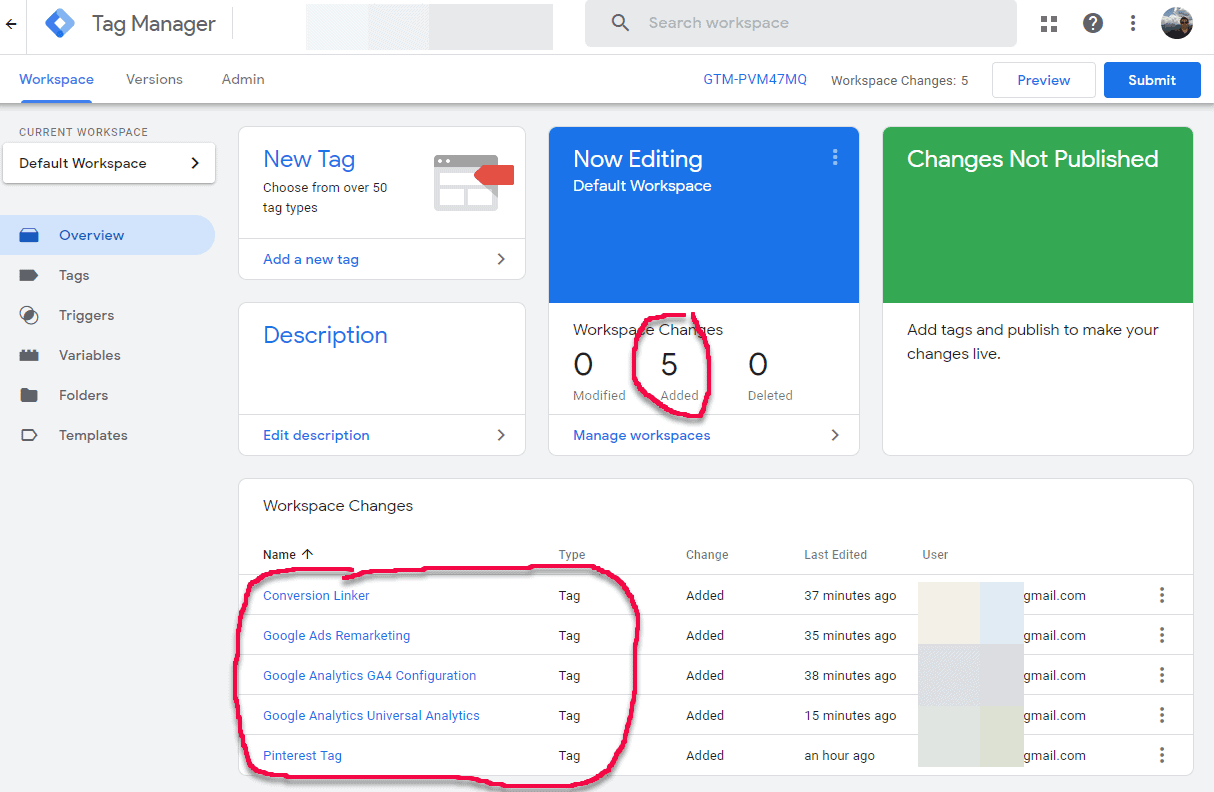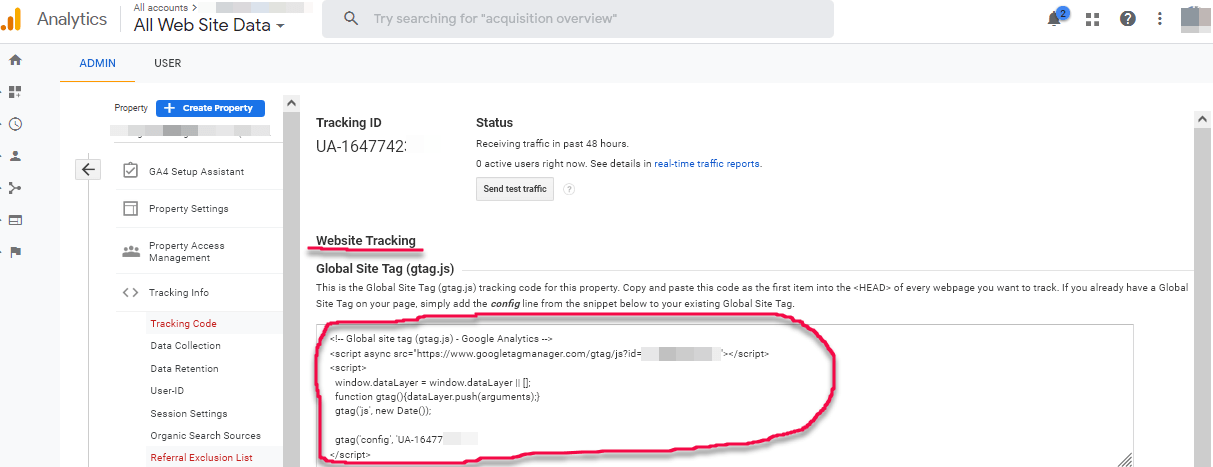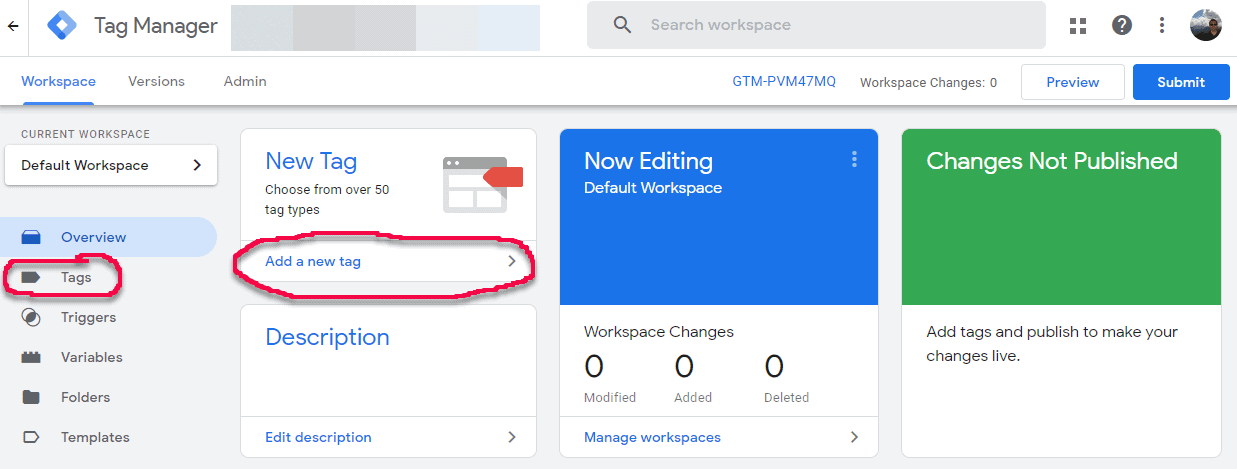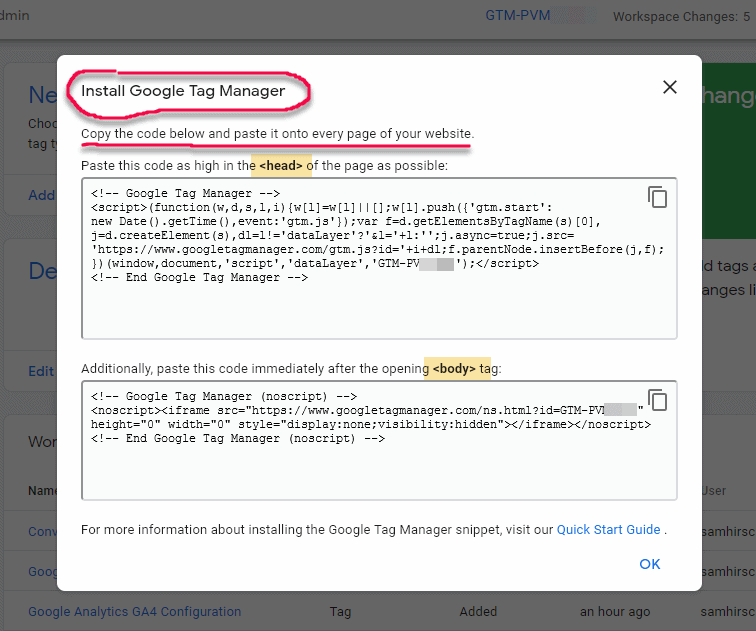How is price used to segment markets? (+Services)
Setting prices can be difficult for anyone, in virtually any industry. This is because cost structures are different from company […]
Read More »Become a successful marketing consultant: Learn more

If you have a website you probably already know about Google Tag Manager.
If not, here’s the high level:
What is Google Tag manager?
Google Tag Manager is a free tool provided by Google. This tool gives a website owner a method to install and manage other codes, a.k.a. tags. These tags can be installed on your website from the Google Tag Manager admin area. To install Google Tag Manager, simply place a piece of automatically generated code onto every page of your website.
As you probably know, Google Analytics is a useful website tracking tool that Google provides to website owners to measure user behavior trends. To set up Google Analytics, you need to place a tag (a snippet of code) onto every page of your website. But if you have Google Tag Manager (GTM) installed, this process can be managed from your GTM admin. This is largely how GTM was born.

But here is where it gets very useful.
The main reason website owners like GTM is that Google knows website owners are advertising their products and services and have many traffic sources.
When Should I Use Google Tag Manager?
Google Tag Manager manages code snippets and tags so it could be put on your website at anytime. If there is no traffic coming to your website, and therefore no need to measure website performance, then there is no need for Google Tag Manager. Alternatively, if your site has multiple traffic sources, Google Tag Manager is a helpful tool to assist website owners in managing tracking systems from many sources.
As you know from studying our Website Marketing and Online Advertising tutorial as well as how to increase traffic and conversion rates, advertising traffic comes from a variety of vendors including:
In order to advertise and measure your performance properly, each traffic source has their own tag that needs to be installed on your website.
You have options. First, you could simply add each code to your website every time you want to add a new advertiser for marketing. Or, because GTM is already installed on your site and provides the “Container” for you to add other codes, you can manage all these codes from your GTM admin.
This frees the owner from the need to involve a developer every time you have to make changes to your traffic sources codes.
 GTM allows you to easily add these tracking tags.
GTM allows you to easily add these tracking tags.
And this tool improves the information gathering process without interfering with the code.
This free data collection and management tool is very useful when used with Google analytics. GTM transmits the data points or controls what information gets to Google Analytics for analysis.
However, GTM does not do any analysis. GTM simply stores the tags and sends the data to Google Analytics for reporting.
Again, faster page loading speeds are very important which is why we featured it as the #1 strategy of the three ways to increase your website conversion rates in this You Tube video #shorts (#shorts just means this video is best viewed for mobile but can still be enjoyed on PC too):
GTM is a tag management system that controls all the tags in one area and simplifies the process. This means you create and deploy tags in one platform, therefore, eliminating possible errors and repetition. With a GTM account, your efficiency dramatically improves.
Normally, installing a Tag Manager Account links it directly to tag manager servers to administrate the tags for websites and mobile apps. You can then use GTM's web-based interface to layout the tags and triggers that react when particular events happen.
With a Tag Manager Account, you can also establish variables to automate the configurations for your tags. One account can work on several websites, but you can still set up multiple accounts.
Your business may be offering downloadable PDFs, but you will not know which resources are most helpful to visitors without an effective tracking tool. A GTM account tracks this data and helps create an effective strategy.
There are many Google Tag Manager Plugins that can be used tt put Google tag manager code on your wordpress site.
Here are four possible solutions depending upon your goals and the version of Wordpress you are running:
We have not tested any of these plugins so please be sure to do your research before using. You can almost always contact your hosting provider if you have any questions about installing the GTM code, or installing wordpress plugins.
GTM really is a valuable tool that allows for easier management and deployment of marketing tags and website analytics. GTM conveniently puts the code snippets onto the WordPress site and does away with manual installation.
The GTM container code is two-pronged -- meaning the GTM has two pieces of code that need to be installed. The first is the javascript code snippet installed to the <head> part of every web page. It enables all GTM features, and the plugin allows the correct placement on the site.
 The second piece of code is the iframe snippet and it provides a failsafe in the case of a disabled javascript. Google recommends placing this opening <body> tag directly before the fallback code snippet for optimal performance.
The second piece of code is the iframe snippet and it provides a failsafe in the case of a disabled javascript. Google recommends placing this opening <body> tag directly before the fallback code snippet for optimal performance.
Wordpress plugins can help you be sure to install this code properly or you can put the code on your wordpress site yourself. If you need help, Your Strategic Marketing Partner is happy to assist.
Google tag management system is entirely free, and it allows for the addition and management of marketing tags - tracking pixels or snippets of codes.
GTM does not need any particular skills or web development.
Other examples of tags or codes include remarketing tags, Google Ads conversion script, Google Analytics tracking code, and event codes from Google Analytics.
In most cases, the free version is all you need for most small and medium-sized organizations and has almost everything you need for marketing campaigns. However, you can check out the premium version in the Google Analytics 360 Suite if you need more.
Before Google's tag management system, the Google Analytics tracking codes had to be hardcoded into the web pages. This was arduous and skill-intensive, and managing hundreds of marketing and tracking events was relatively hard. Today, the GTM free account stores all the codes in one place and has various tag templates to make the process easier. This is at no cost to you.
Before you add any tracking tag, consider your goals.
You only need to track the most relevant actions to know how successful the marketing efforts are at any point.
Determine whether the user actions are must-haves, as these form the tags for your marketing strategy. Don't work to have too many tags. The fewer you have, the better the load time for your website. And load time absolutely impacts your website’s conversion rates.
Many tags demand a lot from a website, and it is at the expense of user experience. Use Google Tag Manager to test and see what works and what does not and make the right changes.
And as always, if you need assistance along the way, Your Strategic Marketing Partner is happy to help!
About Your Strategic Marketing Partner
Sam Hirschberg, MBA, is Your Strategic Marketing Partner in Arizona. Always professional and a delight to work with, Sam is not your typical “marketing consultant”. Unlike most consultants who tell you there is a problem and say, “See you later and good luck!” Your Strategic Marketing Partner knows how to find solutions, execute programs, test and measure campaigns, and how-and-when it’s time to roll-out big! You are invited to call (602) 892-0777 to learn more about Sam’s background on his FREE 9-minute recorded message. For more information about Sam, please visit https://strategicmarketingpartner.com.